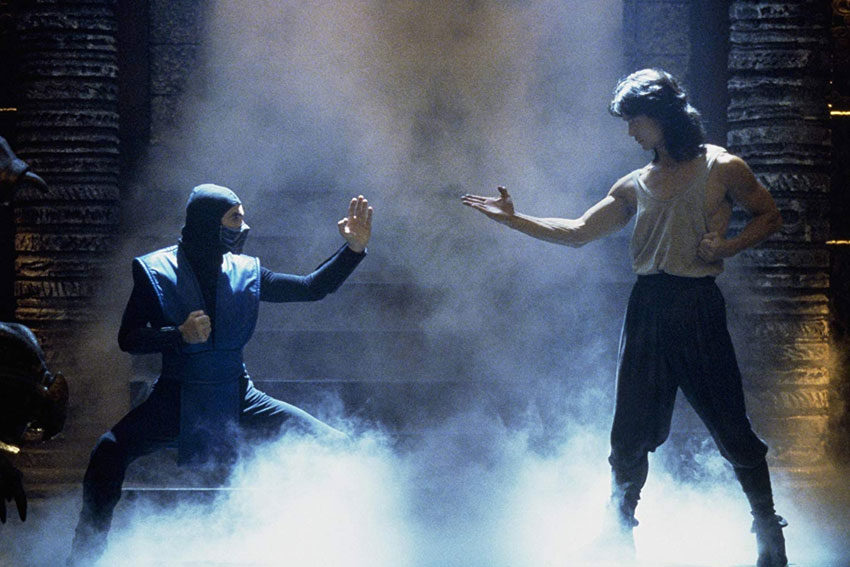Explained: What is Mortal Kombat and why should South Australia care?

As the state government pins the future of our local creative industries on a 27-year-old video game franchise with limited history of box office success, we answer the important question: what is Mortal Kombat, and will it hurt?
Every few weeks a media release slides into The Adelaide Review’s inbox featuring a government figure straight-facedly touting the transformative effect ‘Mortal Kombat’ will have on our economy. A casual reader could be forgiven for thinking Steven Marshall is pinning our state’s hopes on transitioning our costly court-based justice system to a fight-to-the-death model. The recent state budget even allocated millions to its production, now set to be the biggest in South Australia’s history. Let us attempt to explain why.
Introduced in 1992 as an arcade game and competitor to the then-ascendant Street Fighter series, the Mortal Kombat franchise soon made its way to living rooms around the nation to excite its adolescent boys and violence-hating Helen Lovejoys in equal measure. But while over 20 further installments have continued to reel in gaming audiences, the franchise’s big screen fortunes, beginning with 1995’s Mortal Kombat, have been somewhat mixed.
As a child of the 90s, Mortal Kombat evokes many memories. Chiefly, a battery-powered handheld version of the game acquired through countless cereal box tokens, and staring at a VHS copy of the original film held by the local Blockbuster, never able to actually rent the thing due to its M rating. The sight of four-armed fighter Goro on its back cover was oddly mesmerising, a fine example of that uncomfortable half-animatronic, latex-covered ugliness that audiences were forced to stomach in the years between Jim Henson and Avatar.
The 1995 film looks dreadful by today’s standards, but made an acceptable impact on the box office. When sequel Mortal Kombat: Annihilation arrived some years later however, the appeal had somewhat worn off – the poster tagline ‘Destroy All Expectations’ probably didn’t help. A third installment in the trilogy was abandoned, not even earning the indignity of a straight to video release.
But can we blame Mortal Kombat? It was a dicey decade for video game franchises across the board, from the 1994’s Street Fighter (starring Kylie Minogue and a reportedly coked-up Jean Claude Van Damme), to the incomprehensible Bob Hoskins-led Super Mario Brothers in 1993. Perhaps the only video game movie to leave a lasting impression was 1995’s GoldenEye, which despite introducing Pierce Brosnan to the role of James Bond and containing one of Sean Bean’s more outlandish onscreen deaths, is chiefly remembered for its tie-in first person shooter on Nintendo 64.

Despite improvements in digital effects, more recent video game adaptations have fared no better. World of Warcraft? Tomb Raider? Assassin’s Creed? Hitman? All were tied to a spectacularly popular video game series, and all saw their dreams of a Marvel-rivalling blockbuster franchise fizzle down to a ‘Possible sequels’ post-script at the bottom of their Wikipedia pages.

But despite this litany of vanquished franchises, there is every reason to believe South Aussie With Mortal Kossie can finish the trend. It is, after all, in the safest hands it could hope for in producer James Wan, the Australian director behind the Saw franchise and last year’s superhero blockbuster Aquaman. The latter film holds the key to our cautious optimism: starring a character whose primary superpowers are a strong breaststroke and talking to fish, Aquaman looked set to be the dampest of all the modern DC comic book adaptations. And yet, Wan and co. bucked the trend with oddly inspired creative choices, like casting Nicole Kidman as a silver-haired fish queen, and letting ex-Game of Thrones surfer bro Jason Momoa play the title role as a version of his already-established public persona. To cap it all off, Wan gave sidekick Amber Heard bright red Little Mermaid hair and doused the whole affair in an aesthetic that sat somewhere between Hercules: The Legendary Journeys and Ocean Girl.

It was a film that understood better than its painfully self-serious predecessor Batman V Superman, that the pathway to success would be making audiences think “this is so dumb” and “this is so awesome” at the very same time. This is, clearly, the only approach that will make a film about a fantastical fighting tournament populated by characters named Johnny Cage, Sonya Blade, Nightwolf, Noob Saibot, Sub-Zero and Smoke work. Wan’s chosen director Simon McQuoid also knows the audience and the brief, as a veteran ad man who has shot campaigns for Halo, Call of Duty and Playstation 3.
Which leaves us, dear reader, quietly intrigued to see what South Australia’s film industry will make of this latest addition to a crowded landscape of effects-rich, intellectual property-monetising studio tentpoles. What recognisable South Australian landscape will form the backdrop of a key scene, and be destined to appear in every tourism campaign for the next decade? Which regular State Theatre Company actor will gain a small supporting role, and constantly distract us from the martial arts action because we once saw them at Cibo? Will we all look back at this transformative moment the same way New Zealanders do when they consider their pre-Lord of the Rings lives? Anything is possible.
At the very least, we can count on a wave of gnarly Mortal Kombat Crew t-shirts to flood Adelaide’s op shops in three years’ time. Which, the state government will be happy to note, is a definite economic outcome.
Mortal Kombat is currently in pre-production ahead of a 2021 release

Header image:
Mortal Kombat (1995) (Photo: Warner Bros)